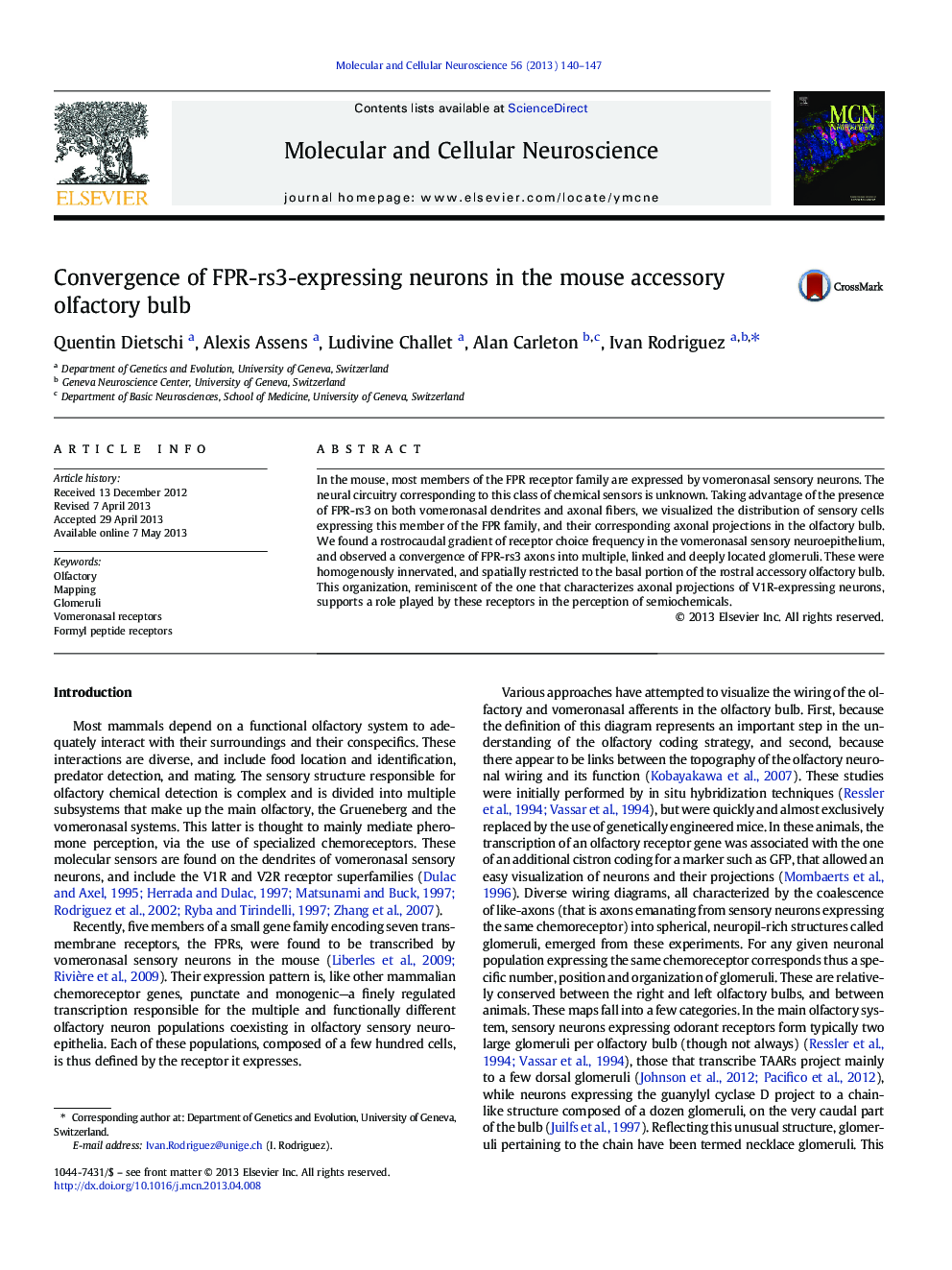| Article ID | Journal | Published Year | Pages | File Type |
|---|---|---|---|---|
| 8478654 | Molecular and Cellular Neuroscience | 2013 | 8 Pages |
Abstract
In the mouse, most members of the FPR receptor family are expressed by vomeronasal sensory neurons. The neural circuitry corresponding to this class of chemical sensors is unknown. Taking advantage of the presence of FPR-rs3 on both vomeronasal dendrites and axonal fibers, we visualized the distribution of sensory cells expressing this member of the FPR family, and their corresponding axonal projections in the olfactory bulb. We found a rostrocaudal gradient of receptor choice frequency in the vomeronasal sensory neuroepithelium, and observed a convergence of FPR-rs3 axons into multiple, linked and deeply located glomeruli. These were homogenously innervated, and spatially restricted to the basal portion of the rostral accessory olfactory bulb. This organization, reminiscent of the one that characterizes axonal projections of V1R-expressing neurons, supports a role played by these receptors in the perception of semiochemicals.
Related Topics
Life Sciences
Biochemistry, Genetics and Molecular Biology
Cell Biology
Authors
Quentin Dietschi, Alexis Assens, Ludivine Challet, Alan Carleton, Ivan Rodriguez,
